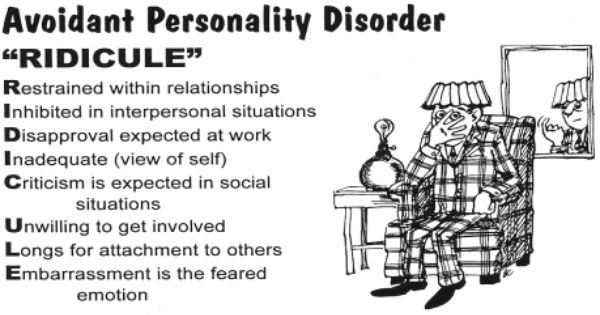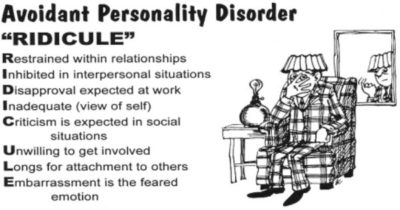
What is a Personality Disorder? Understanding the Main Types, Causes & Treatments Available
What is a Personality Disorder?
Everyone has personality traits that characterise them. These are the usual ways that a person thinks and behaves, which make each of us unique.
Personality traits become a personality disorder when the pattern of thinking and behaviour is extreme, inflexible and maladaptive. They may cause major disruption to a person’s life and are usually associated with significant distress to the self or others.
Personality disorders begin in childhood and persist throughout adulthood.
The prevalence of personality disorders is not firmly established and varies for the different disorders. Borderline personality disorder is experienced by about one in 100 people.
While personality can be difficult to change, with early and appropriate treatment and support, people with personality disorders can live full and productive lives.
What are the main types of personality disorder?
There is a wide range of personality disorders. All of them involve a pervasivepattern of behaviour, which means that the characteristic behaviours and thoughts are evident in almost all aspects of a person’s life.
There are three clusters of personality disorders: odd or eccentric disorders; dramatic, emotional or erratic disorders; and anxious or fearful disorders. Specific disorders are as follows:
Paranoid personality disorder is a pervasive distrust and suspiciousness of others, such that their motives are interpreted as malevolent.
Schizoid personality disorder is a pervasive pattern of detachment from social relationships and a restricted range of expression of emotions in interpersonal settings.
Schizotypal personality disorder is a pervasive pattern of social and interpersonal deficits marked by acute discomfort with reduced capacity for close relationships. It is also characterised by distortions of thinking and perception and eccentric behaviour.
Antisocial personality disorder is a pervasive pattern of disregard for and violation of the rights of others.
Histrionic personality disorder is a pervasive pattern of excessive emotion and attention seeking.
Narcissistic personality disorder is a pervasive pattern of grandiosity (in fantasy or actual behaviour), need for admiration, and lack of empathy. Useful link – What are the Signs of a Narcissist in Your Life
Avoidant personality disorder is a pervasive pattern of social inhibition, feelings of inadequacy, and hypersensitivity to negative evaluation.

Dependent personality disorder is a pervasive and excessive need to be taken care of, which leads to submissive and clinging behaviour and fears of separation.
Obsessive-compulsive personality disorder is a pervasive pattern of preoccupation with orderliness, perfectionism, and mental and interpersonal control, at the expense of flexibility, openness, and efficiency.
Borderline personality disorder is a pervasive pattern of instability of interpersonal relationships, self-image, moods, and control over impulses.
Understanding borderline personality disorder is particularly important because it can be misdiagnosed as another mental illness, particularly a mood disorder.
People with borderline personality disorder are likely to have:
– Wide mood swings.
– Inappropriate anger or difficulty controlling anger.
– Chronic feelings of emptiness.
– Recurrent suicidal behaviour, gestures or threats, or self-harming behaviour.
– Impulsive and self-destructive behaviour.
– A pattern of unstable relationships.
– Persistent unstable self-image or sense of self.
– Fear of abandonment.
– Periods of paranoia and loss of contact with reality.
Co-occurring mental health problems
Personality disorders often co-occur with other mental illnesses. If this is more interest around this subject I’ll share more on mental illness and a series that goes with it.
Harmful alcohol and other drug use often co-occurs with personality disorders, particularly borderline personality disorder. This makes treatment more complex, and effectively managing alcohol and other drug use is important.
What causes personality disorders?
Personality disorders develop in childhood and the thoughts and behaviours become increasingly ingrained in adulthood.
Some personality disorders are more common in men (ie antisocial personality disorder) and others are more common in women (ie borderline personality disorder).
Many people with a personality disorder do not seek help until after years of distress, if at all. This contributes to our lack of knowledge about their causes and development.
Different causes appear to be associated with the different types of personality disorders. However, like most mental illnesses, the causes appear to be a complex combination of genetic factors, biochemical factors, and individual, family and environmental factors.
What causes borderline personality disorder?
It is well established that the tendency to develop borderline personality disorder runs in families. This is similar to a predisposition to other illnesses, such as diabetes and heart disease.
There is some evidence that borderline personality disorder may be related to a chemical imbalance in the brain.
Childhood abuse, neglect, and child separation from caregivers or loved ones are believed to be major contributing factors, particularly sustained and severe abuse.
Women are more likely to develop borderline personality disorder than men.
What treatment is available?
The range of treatments for personality disorders is growing. The type of treatment depends on the type of personality disorder.
Many personality disorders are related to other mental illnesses, although the behaviour is usually more enduring and chronic. For example, obsessive compulsive personality disorder is related to obsessive compulsive disorder, schizoid personality disorder to schizophrenia, and avoidant personality disorder to social phobia. Consequently, some similar treatment approaches may be used.
For borderline personality disorder, psychological therapies are the main treatment approach. Dialectical behaviour therapy (DBT) is a form of cognitive behavioural therapy that targets mood instability and impulsivity.
It teaches people how to manage their emotions, and re-learn ways to react to people and situations.
An important aim of treatment for people with borderline personality disorder is managing self-harm and suicidal behaviour. DBT has been shown to be effective in bringing suicidal behaviours under control.
While our understanding of the effective treatment of personality disorders is still growing, the earlier treatment is sought the more effective it is likely to be.
The family and friends of people with a personality disorder can often feel confused and distressed. Support and education, as well as better community understanding, are an important part of treatment.
Where to go for help
– Your general practitioner.
– Your community health centre.
– Your community mental health centre.
Amazon #ads
Amazon #ads





